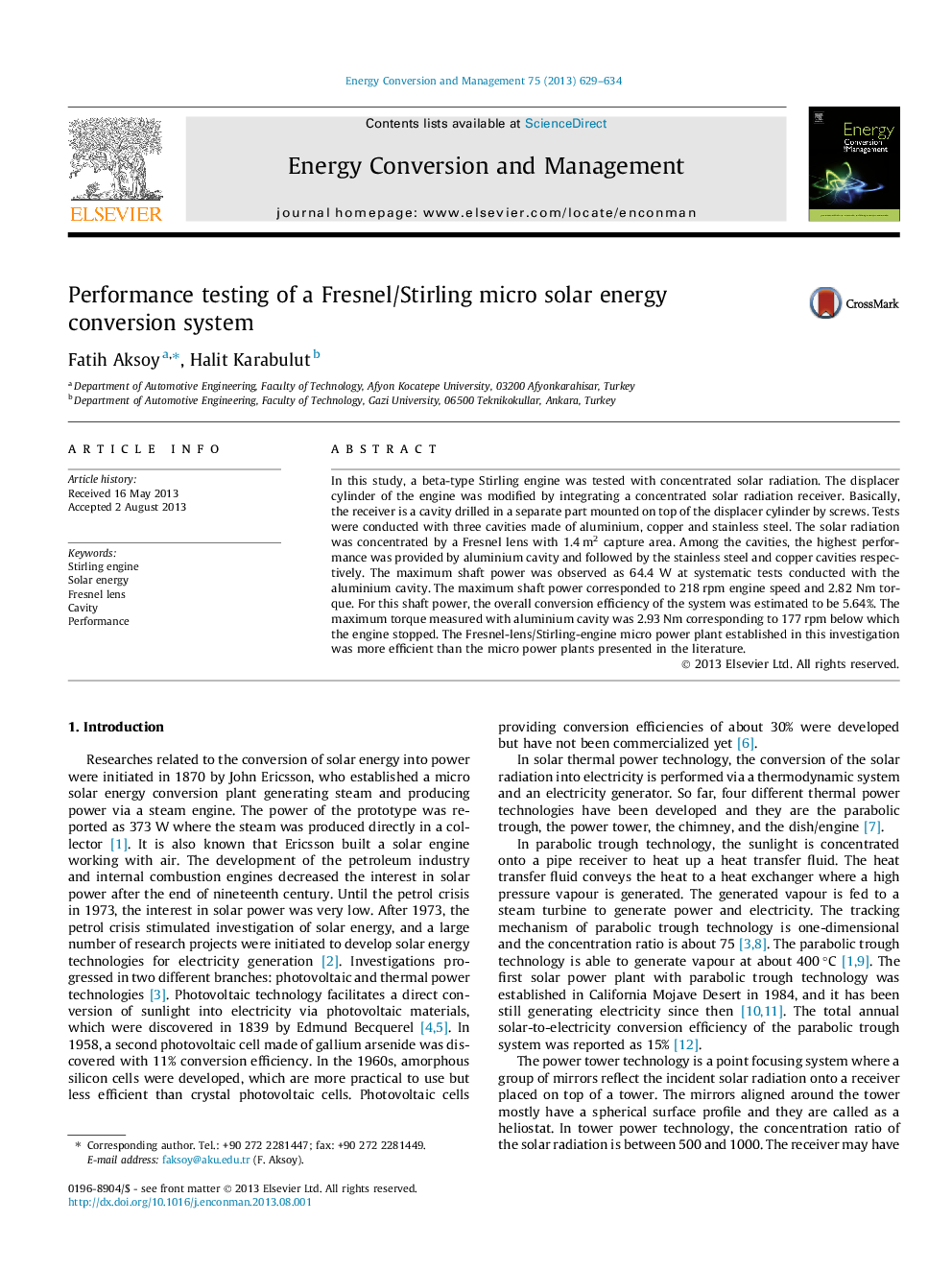| Article ID | Journal | Published Year | Pages | File Type |
|---|---|---|---|---|
| 7166471 | Energy Conversion and Management | 2013 | 6 Pages |
Abstract
In this study, a beta-type Stirling engine was tested with concentrated solar radiation. The displacer cylinder of the engine was modified by integrating a concentrated solar radiation receiver. Basically, the receiver is a cavity drilled in a separate part mounted on top of the displacer cylinder by screws. Tests were conducted with three cavities made of aluminium, copper and stainless steel. The solar radiation was concentrated by a Fresnel lens with 1.4Â m2 capture area. Among the cavities, the highest performance was provided by aluminium cavity and followed by the stainless steel and copper cavities respectively. The maximum shaft power was observed as 64.4 W at systematic tests conducted with the aluminium cavity. The maximum shaft power corresponded to 218Â rpm engine speed and 2.82 Nm torque. For this shaft power, the overall conversion efficiency of the system was estimated to be 5.64%. The maximum torque measured with aluminium cavity was 2.93Â Nm corresponding to 177Â rpm below which the engine stopped. The Fresnel-lens/Stirling-engine micro power plant established in this investigation was more efficient than the micro power plants presented in the literature.
Related Topics
Physical Sciences and Engineering
Energy
Energy (General)
Authors
Fatih Aksoy, Halit Karabulut,
